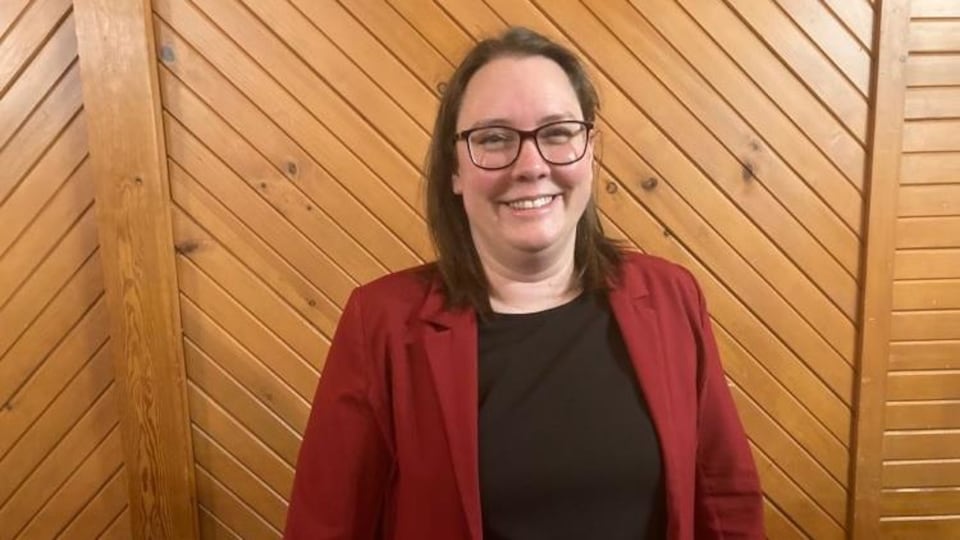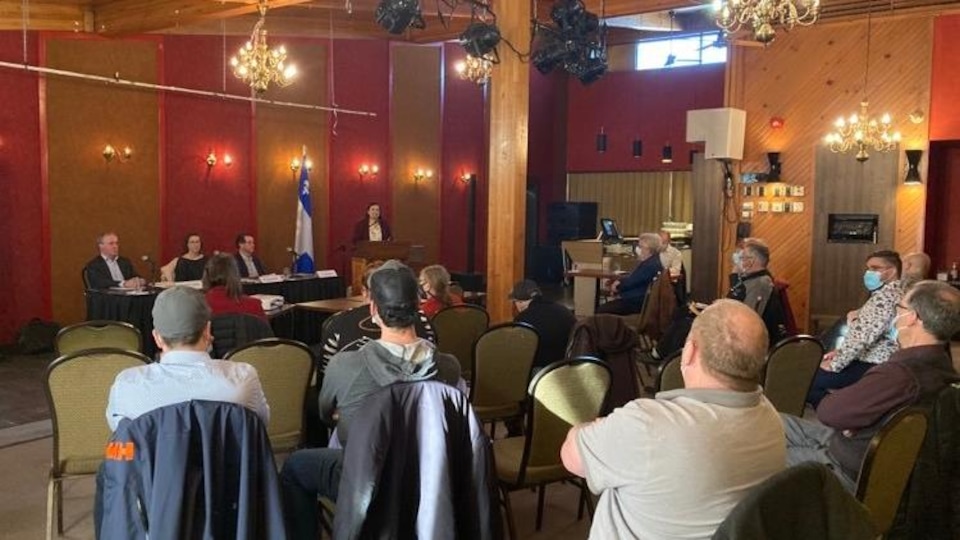About thirty participants took part in the evening, without acrimony. A citizen for a long time was to discomfort
as for the starting tracks of the commission which presents two scenarios: one suggesting a level of protection of the habitat with socio-economic consequences and a second without additional forest impact.
The president of the commission, Nancy Gélinas, specified even before the first round of speech, that it was about options among many others
inviting participants not to limit themselves or to make other proposals.
Uniting forestry and conservation
Marie-Eve Sigouin, forestry engineer and director of forestry at GreenFirstreviewed developments made by Tembec, which became Ryam and today GreenFirst to ensure the development of a sustainable industry.
We were among the first to have a pilot project in terms of ecosystem management in 2008. We plan what we cut, but we also plan what we leave and we want it to be representative of forest types, age groups too
she explains.
In her memoir, she insisted on the importance of preserving both forest resources and caribou habitat. It must be said that north of La Sarre, the territory is less disturbed than in Val-d’Or.
We have a lot of undisturbed environments because they are large expanses of peat bogs
she adds.
Another element mentioned by Marie-Eve Sigouin, the pursuit of commitments related to the responsible forestry standard Forest Stewardship Council (FSC).Maintaining our certifications FSC is essential for our products destined for markets and for big box stores that require this standard for lumber, but also for chips that require certified fiber
says Marie-Eve Sigouin.
This certification FSC depends on compliance with various principles for responsible forest management. In particular, it provides for sustainable supply, the conservation and restoration of ecosystems and respect for the rights of indigenous populations.
By embarking on the path to certification FSC, the industry which qualifies and preserves it, demonstrates that it is possible to make a compromise between the imperatives of protection and those of production. The approach may in particular involve not harvesting all the volume allocated in a given territory.
The labor shortage invites itself to the consultation
Resident of Saint-Germaine-Boulé, Frédéric Beauchamp believes that the debate on the caribou is the last in the running to overshadow the region in its outbursts of attractiveness.
Send the caribou to a zoo, put them in enclosures, arsenic [dans] an open pit in Malartic where we move houses: sometimes we seem completely disorganized. Regional vitality goes through a territory that respects itself and we are badly perceived for that
he launched to the commissioner.
Like others before him, he expressed a lack of cohesion or places of consultation where sometimes opposing visions could be asserted, but in a collaborative spirit. The president of the commission also retained this element.
On the consultation component, many spoke of the Regional Conferences of Elected Officials who have disappeared and this desire of the population to get involved and find solutions together, it also emerged in Sainte-Anne-des-Monts.
Significant disparities in Abitibi-Témiscamingue
The consultation document specifies that there are three ecotypes of caribou in Quebec, the forester, the mountain dweller and the migratory. Abitibi-Témiscamingue is home to the woodland caribou, designated a vulnerable species in 2005. It is found in the boreal forest between the 49and and the 55and parallel.
North of La Sarre, the prognosis is more optimistic than in Val-d’Or, where only seven caribou remain in the enclosure today. A citizen underlined in broad strokes that she did not feel able to choose those to be sacrificed
. According to her, this ethical dilemma represents an acknowledgment of failure.
The distinction between the state of the populations in Val-d’Or and north of La Sarre is also visible from the air. Frédéric Beauchamp, who flies over the region in a seaplane, observed it.What was done by Abitbiwini, GreenFirst and SNAP, we see that less than 35% of caribou habitat has been disturbed. We are far from the deserts […] I have a camp in Clova, before I was in the forest, now I have a camp in the middle of a desert
he argues.
Throughout the province, besides Val-d’Or, another population of woodland caribou is also found south of 49and parallel and in a situation of isolation: that of Charlevoix.
Begun on April 12 in Sainte-Anne-Des-Monts, the commission on woodland and mountain caribou will continue its work this Thursday, in Val-d’Or and the commissioners will then go to Chibougamau, Alma and end in Baie-Comeau. , May 17.
Citizens or organizations who wish to do so can also take part in the discussions by answering a short online questionnaire containing seven questions.
The form is available on the commission’s website. In particular, it is possible to decide on the priority elements to be considered for the development of a recovery or protection strategy, whether it is preferable to prioritize certain populations and the socio-economic consequences of the measures.
According to the steps set out in the commission’s process, a report must be submitted to the government this summer.
Reference-ici.radio-canada.ca



